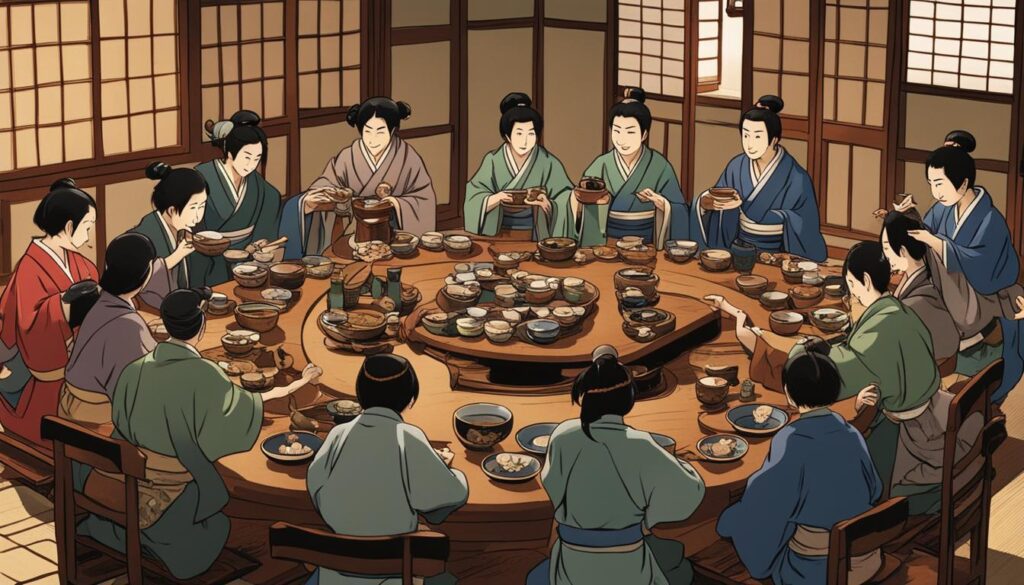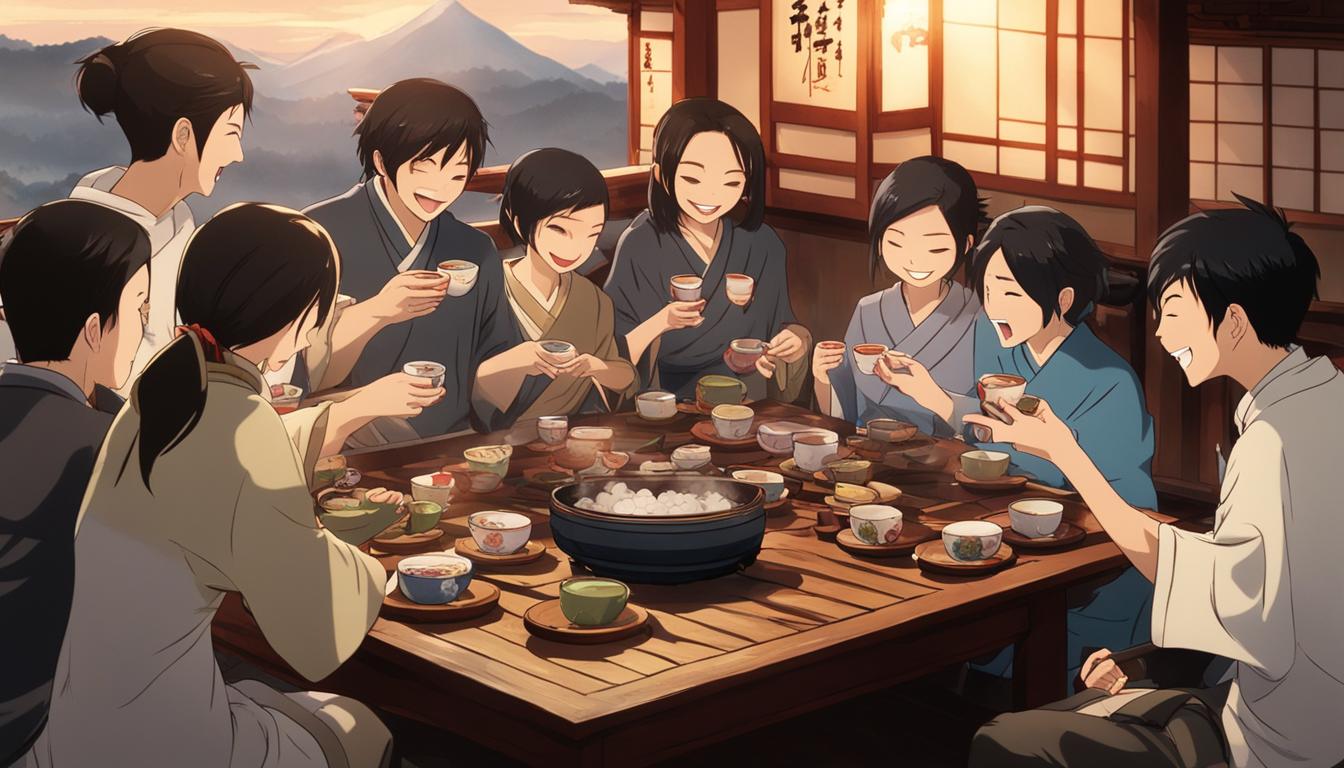When it comes to drinking in Japan, knowing how to say “cheers” in Japanese is essential. It’s not just about the words, but also about understanding the cultural significance behind them. In Japanese drinking culture, raising a glass and making a toast is a way to build unity and camaraderie among friends, colleagues, and even strangers. So, let’s dive into the meaning, pronunciation, and cultural usage of the word “cheers” in Japanese!
Meaning and Grammar
The most common phrase used to say “cheers” in Japanese is “kanpai.” It translates to “bottoms up” in English. The word “kanpai” is a compound made up of two kanji characters: “乾杯.” The first character “乾” means “dry” or “empty,” while the second character “杯” represents a cup or glass.
In terms of grammar, “kanpai” is an interjection that is usually used before drinking alcohol. It’s a simple and straightforward way to express well wishes and gratitude while raising a glass with others.
How to Pronounce and Equivalent Words
The pronunciation of “kanpai” is relatively simple. It is pronounced as “kahn-pie.” The first syllable “kan” is pronounced with a short “a” sound, similar to the “a” in “can.” The second syllable “pai” is pronounced with a long “i” sound, like the “i” in “pie.”
While “kanpai” is the most common and widely recognized way to say “cheers” in Japanese, there are a few other phrases that can be used in different contexts. One alternative is “otsukare-sama desu,” which can be translated as “good job today” or “thanks for your hard work.” It is often used at the end of a workday or to congratulate someone on their achievements.
Another phrase that can be used for celebratory occasions is “omedetou gozaimasu,” which means “congratulations.” This phrase is commonly used to toast to birthdays, weddings, promotions, and other milestones.
Writing in Kanji
To write “kanpai” in kanji characters, you would use the following two characters: “乾杯.” The first character “乾” represents “dry” or “empty,” while the second character “杯” symbolizes a cup or glass.
Contextual and Cultural Usage
Saying “kanpai” is not just about clinking glasses and drinking alcohol. It’s a cultural expression of unity and shared experiences. When drinking in Japan, it is customary to wait for everyone to receive their drinks before toasting. It is also polite to make eye contact with those nearest to you as you raise your glass.
Drinking in Japan is often accompanied by various rituals and etiquettes. It is considered impolite to pour your own drink, so it’s common for someone else to fill your glass. Reciprocating the gesture by pouring drinks for others is a way to show respect and camaraderie.
Understanding the meaning and context of “kanpai” is important to use it appropriately in social situations. It helps to foster a sense of unity and respect among everyone present. So, next time you raise your glass in Japan, remember to say “kanpai” and toast like a local!
Japanese Drinking Etiquette
When drinking in Japan, it is important to follow certain etiquettes and rules to ensure a respectful and enjoyable experience. Familiarizing yourself with Japanese drinking etiquette will help you navigate social situations with ease. Here are some key guidelines to keep in mind:
1. Wait for the Whole Group
In Japanese drinking culture, it is customary to wait until everyone in the group has received their drinks before you start. This shows respect and unity among friends or colleagues.
2. Make Eye Contact
As you raise your glass to say cheers, make eye contact with the people nearest to you. This gesture acknowledges and appreciates their presence in the moment.
3. Toasting Hierarchy
When toasting, remember that the glass of the most senior person should be slightly higher than yours. This subtle difference in height signifies respect and hierarchy.
4. Don’t Pour Your Own Drink
In Japanese drinking etiquette, it is considered impolite to pour your own drink. Instead, wait for someone else to fill your glass. This practice fosters camaraderie and shows a willingness to take care of others.
5. Reciprocate the Gesture
If someone pours your drink, it is customary to reciprocate the gesture. Fill their glass in return as a sign of gratitude and respect. This mutual act of pouring reinforces social bonds.
6. Moderate Your Drinking
Be mindful of the rhythm of the drinking session and the pace at which others are drinking. Avoid drinking more than you can handle, as it may cause embarrassment for yourself or others.
By adhering to these Japanese drinking etiquettes, you can fully immerse yourself in the rich culture of drinking in Japan and enjoy a harmonious and respectful experience.
Traditional Japanese Toasts

The traditional way to toast in Japanese is by saying “kanpai,” which means “bottoms up.” This phrase is often accompanied by raising glasses and taking a sip of the drink. It is a spirited expression of camaraderie and celebration in Japanese drinking culture.
Another common phrase used is “otsukare-sama desu,” which is a recognition of hard work and can be used in more formal settings. It is a way to show appreciation and acknowledge the efforts of those involved. This toast is often exchanged after a long day of work or to express gratitude.
Additionally, “omedetou gozaimasu” can be used to celebrate victories and milestones. It is a way to congratulate someone and express well wishes. This toast is commonly heard at weddings, birthdays, and other joyous occasions.
Understanding the meaning and context behind these traditional Japanese toasts is important to use them appropriately and respectfully. Embracing these cultural customs adds depth to the drinking experience and fosters a sense of connection with the Japanese people.
Common Japanese Toasts and Translations
| Japanese | Translation |
|---|---|
| かんぱい (Kanpai) | Bottoms up/Cheers |
| おつかれさまです (Otsukare-sama desu) | Good job today/Thanks for your hard work |
| おめでとうございます (Omedetou gozaimasu) | Congratulations |
Popular Drinks in Japan
In Japan, the drinking culture is rich and diverse, with a wide range of beverages to choose from. Whether you’re looking for an alcoholic drink or a non-alcoholic option, Japan has something for everyone.
When it comes to alcoholic drinks, beer is a popular choice in social settings and business occasions. Some well-known Japanese beer brands include Asahi, Kirin, Sapporo, and Yebisu. These beers are often served chilled and pair well with a variety of Japanese cuisine.
Sake, a traditional rice wine, is another beloved drink in Japan. Sake is often enjoyed alongside appetizers or light fare and has a distinct flavor profile. It’s served in small cups and can be hot or cold, depending on personal preference.
For those looking to try something unique, shochu is a popular distilled spirit in Japan. It can be enjoyed straight, on the rocks, or mixed with other beverages. Another popular choice is umeshu, a sweet plum wine that offers a delightful balance of flavors.
Whisky has gained popularity in recent years, with Japanese distilleries producing high-quality options that rival those from Scotland and Ireland. Japanese whisky is known for its smoothness and depth of flavor.
If you prefer non-alcoholic drinks, Japan also offers a variety of refreshing options. Amazake, a sweet fermented rice drink, is a popular choice during the winter months. Oolong tea, a type of Chinese tea, is commonly consumed with meals or as a refreshing beverage on its own. Calpis, a sweet and tangy milk-based beverage, is another popular non-alcoholic choice.
To give you a visual representation of popular drinks in Japan, here’s a table showcasing some of the top choices:
| Alcoholic Drinks | Non-Alcoholic Drinks |
|---|---|
| Beer (Asahi, Kirin, Sapporo, Yebisu) | Amazake |
| Sake | Oolong tea |
| Shochu | Calpis |
| Umeshu (plum wine) | |
| Whisky |
Exploring the diverse array of drinks in Japan is an exciting part of experiencing the country’s culture. Whether you prefer alcoholic or non-alcoholic beverages, there’s something for everyone to enjoy. So, raise your glass and toast to the vibrant Japanese drinking culture!
Drinking Laws in Japan
When visiting Japan, it is crucial to familiarize yourself with the country’s drinking laws to ensure a safe and enjoyable experience. Japanese drinking and driving laws are uncompromising, implementing a zero-tolerance policy for any amount of alcohol in your system while operating a vehicle. It is essential to refrain from drinking and driving, as the penalties can be severe, including fines, license suspension, and even imprisonment.
In Japan, public drinking is generally acceptable; however, it is important to be respectful and considerate of others. While some areas may have designated zones or events where drinking in public is allowed, it is best to avoid excessive public consumption of alcohol in public places unless explicitly permitted. Remember that Japanese society emphasizes harmony and mindfulness, so acting responsibly in public settings is highly valued.
Another aspect to be aware of is the phenomenon known as “nomihoudai,” which refers to the all-you-can-drink concept found in many Japanese restaurants and bars. Nomihoudai offers unlimited drinks for a set price within a specific time period. It is essential to drink responsibly and know your limits when participating in nomihoudai to avoid any legal or social issues. Be aware that establishments may cut you off or refuse service if they feel you have had too much to drink.
By understanding and respecting the drinking laws in Japan, you can safely navigate the vibrant drinking culture while enjoying your time in the country. Remember to always prioritize your safety and the well-being of those around you as you indulge in the unique experiences that Japan has to offer.

